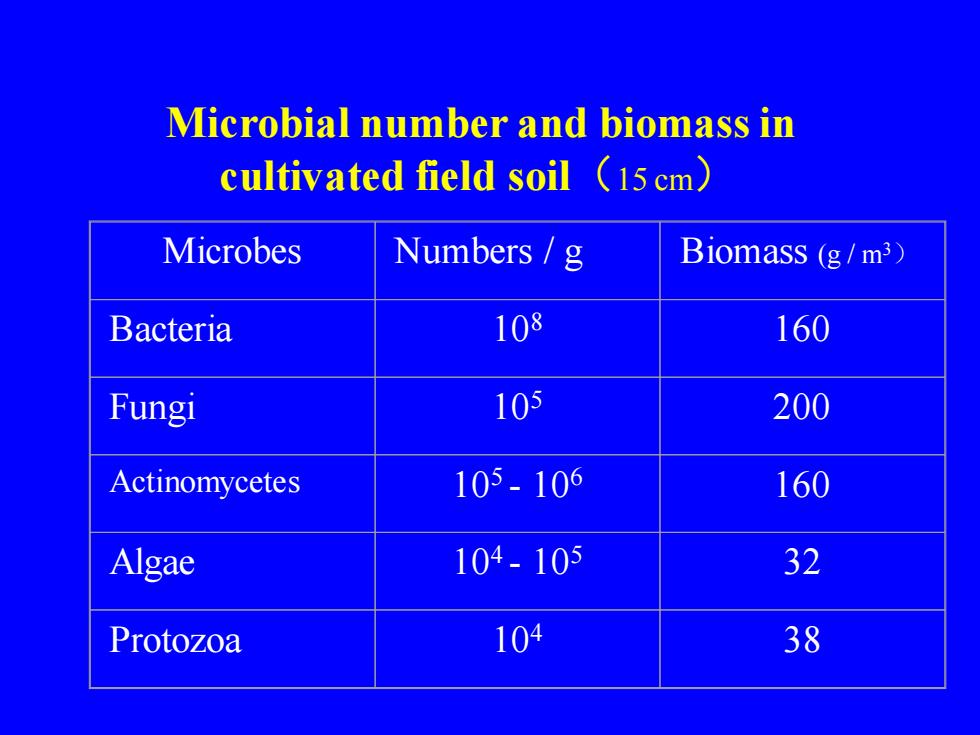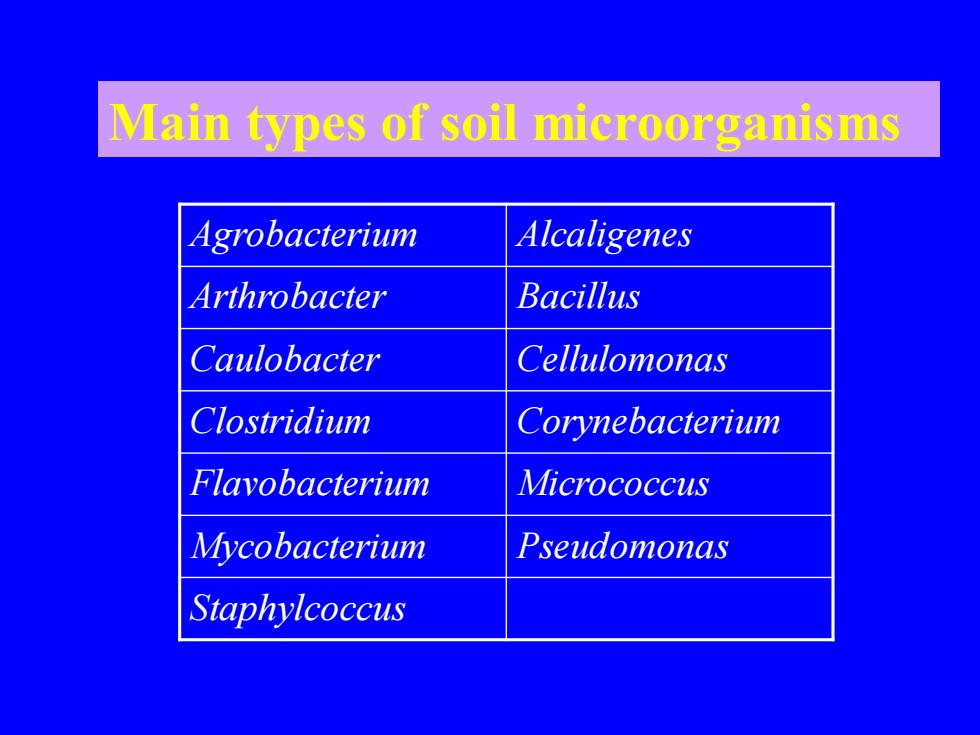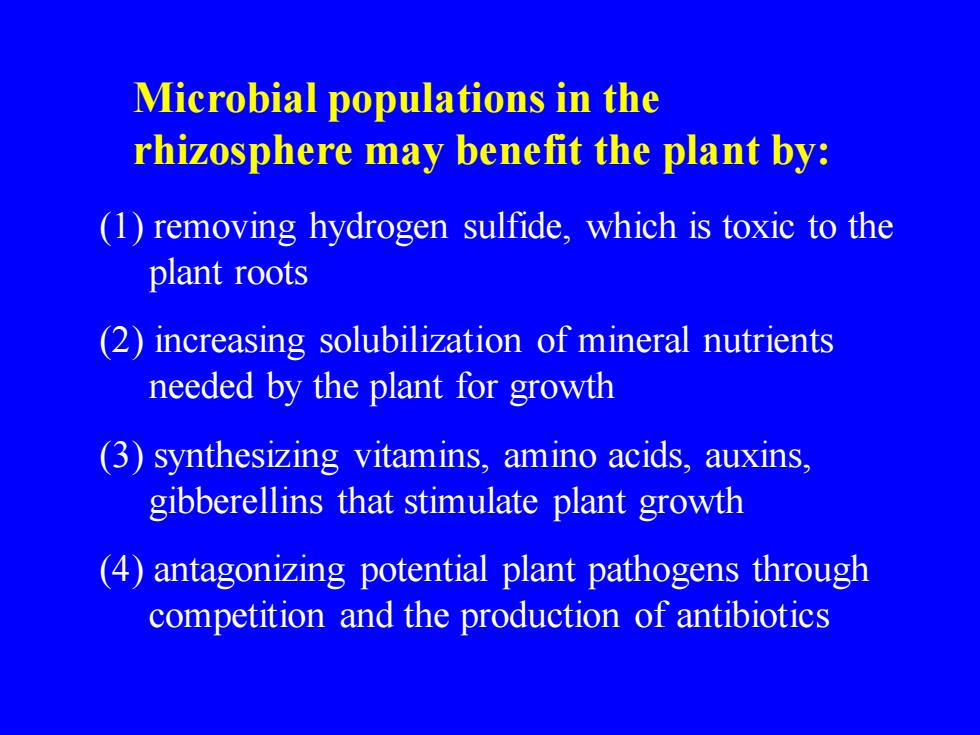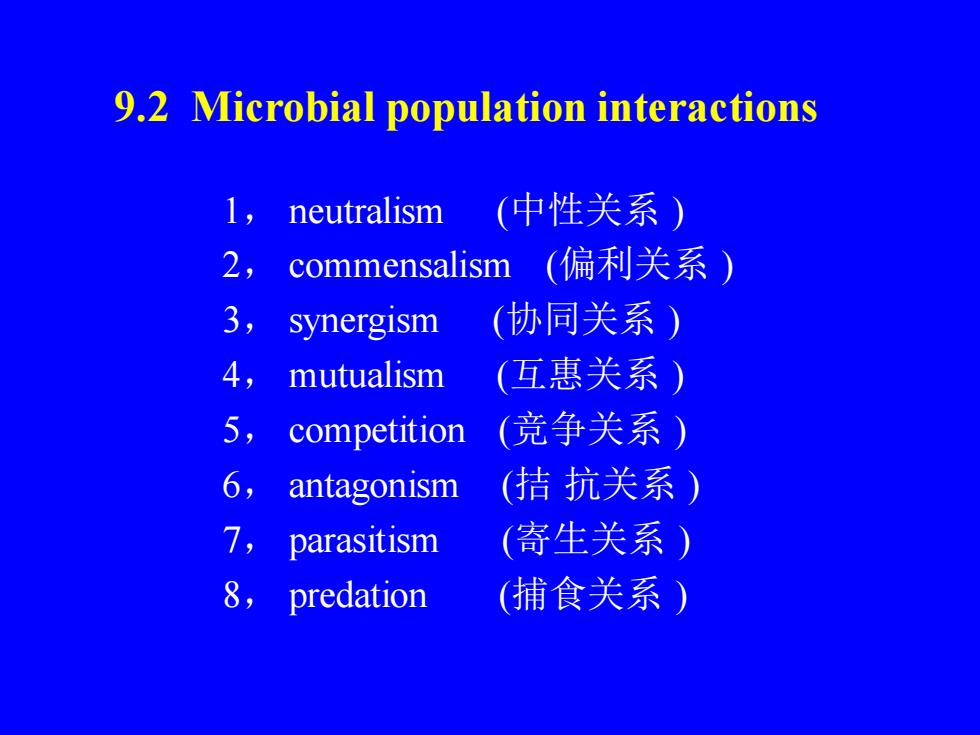
Microbial number and biomass in cultivated field soil(15 cm) Microbes Numbers / g Biomass (g / m3) Bacteria 108 160 Fungi 105 200 Actinomycetes 105 - 106 160 Algae 104 - 105 32 Protozoa 104 38
Microbial number and biomass in cultivated field soil(15 cm) Microbes Numbers / g Biomass (g / m3) Bacteria 108 160 Fungi 105 200 Actinomycetes 105 - 106 160 Algae 104 - 105 32 Protozoa 104 38

Agrobacterium Alcaligenes Arthrobacter Bacillus Caulobacter Cellulomonas Clostridium Corynebacterium Flavobacterium Micrococcus Mycobacterium Pseudomonas Staphylcoccus Main types of soil microorganisms
Agrobacterium Alcaligenes Arthrobacter Bacillus Caulobacter Cellulomonas Clostridium Corynebacterium Flavobacterium Micrococcus Mycobacterium Pseudomonas Staphylcoccus Main types of soil microorganisms

The rhizosphere is the soil region in close contact with plant roots. Within the rhizosphere, the plant roots exert a direct influence on the soil bacteria. This influence is known as the rhizosphere effect. In the rhizosphere, microbial populations reach much higher densities in the rhizosphere than in the free soil. Rhizosphere Effect ( R/S ratio )
The rhizosphere is the soil region in close contact with plant roots. Within the rhizosphere, the plant roots exert a direct influence on the soil bacteria. This influence is known as the rhizosphere effect. In the rhizosphere, microbial populations reach much higher densities in the rhizosphere than in the free soil. Rhizosphere Effect ( R/S ratio )

(1) removing hydrogen sulfide, which is toxic to the plant roots (2) increasing solubilization of mineral nutrients needed by the plant for growth (3) synthesizing vitamins, amino acids, auxins, gibberellins that stimulate plant growth (4) antagonizing potential plant pathogens through competition and the production of antibiotics Microbial populations in the rhizosphere may benefit the plant by:
(1) removing hydrogen sulfide, which is toxic to the plant roots (2) increasing solubilization of mineral nutrients needed by the plant for growth (3) synthesizing vitamins, amino acids, auxins, gibberellins that stimulate plant growth (4) antagonizing potential plant pathogens through competition and the production of antibiotics Microbial populations in the rhizosphere may benefit the plant by:

1, neutralism (中性关系 ) 2, commensalism (偏利关系 ) 3, synergism (协同关系 ) 4, mutualism (互惠关系 ) 5, competition (竞争关系 ) 6, antagonism (拮 抗关系 ) 7, parasitism (寄生关系 ) 8, predation (捕食关系 ) 9.2 Microbial population interactions
1, neutralism (中性关系 ) 2, commensalism (偏利关系 ) 3, synergism (协同关系 ) 4, mutualism (互惠关系 ) 5, competition (竞争关系 ) 6, antagonism (拮 抗关系 ) 7, parasitism (寄生关系 ) 8, predation (捕食关系 ) 9.2 Microbial population interactions